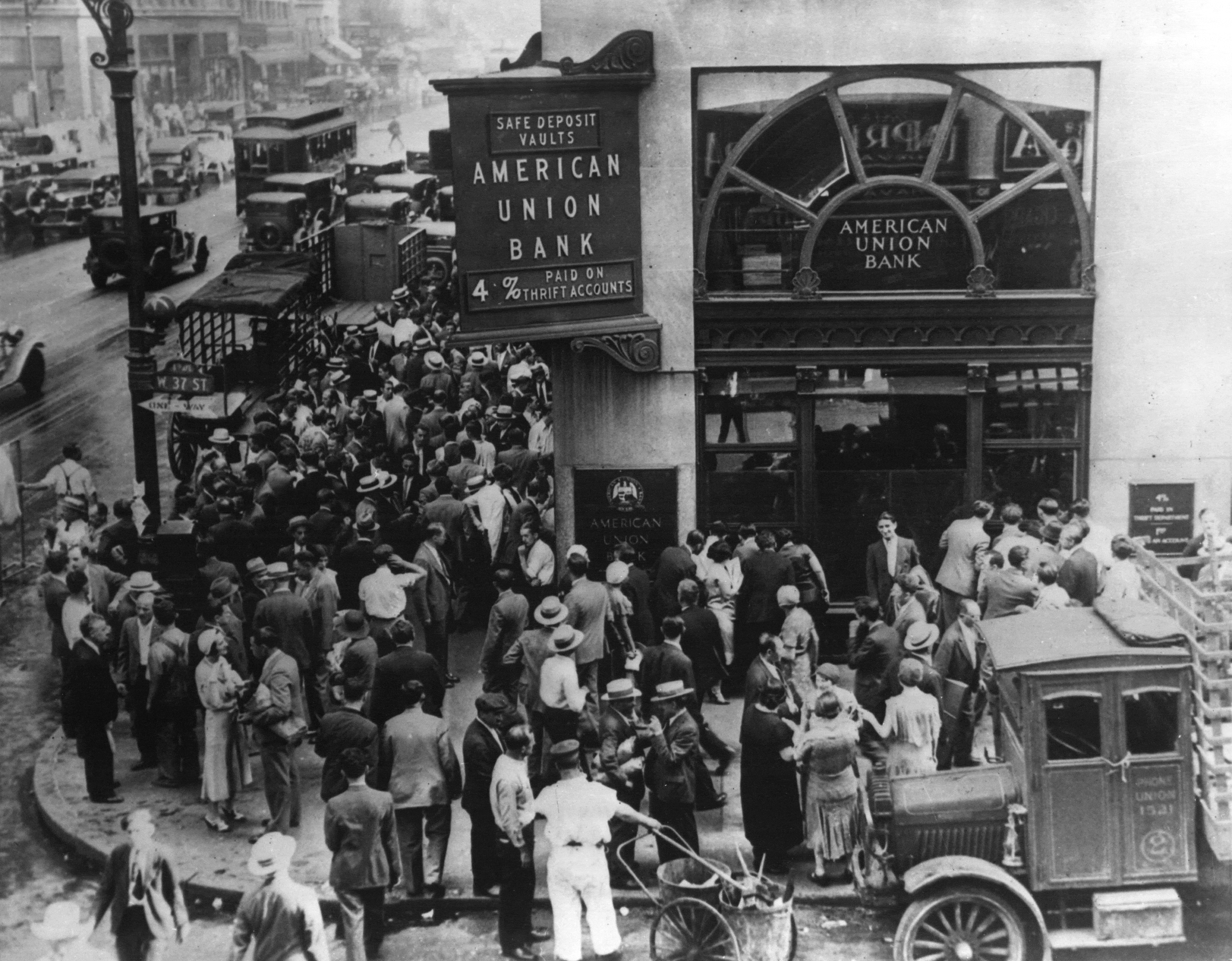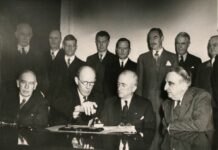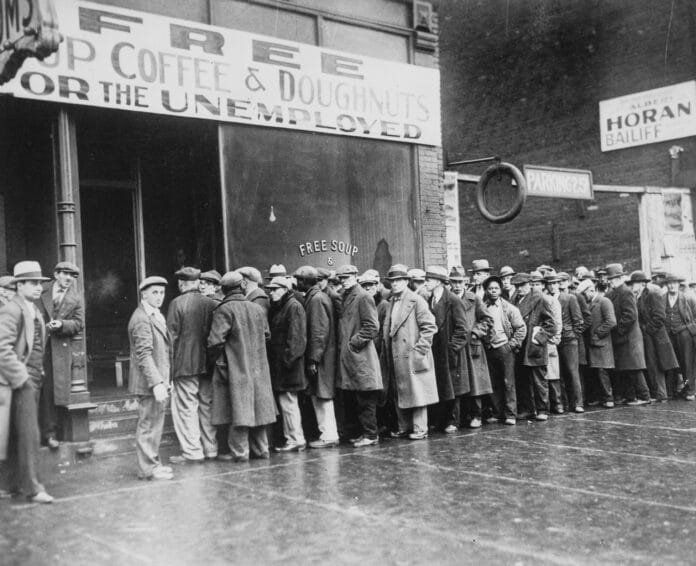
Emneliste om krakket og Wall Street krisen. Den 24. oktober 1929 oplevede børsen i Wall Street, New York, et børskrak – “Den Sorte Torsdag”.
Bjarne A. Frandsen, oktober 2008.
Rev. og ajourført oktober 2019.
Indhold
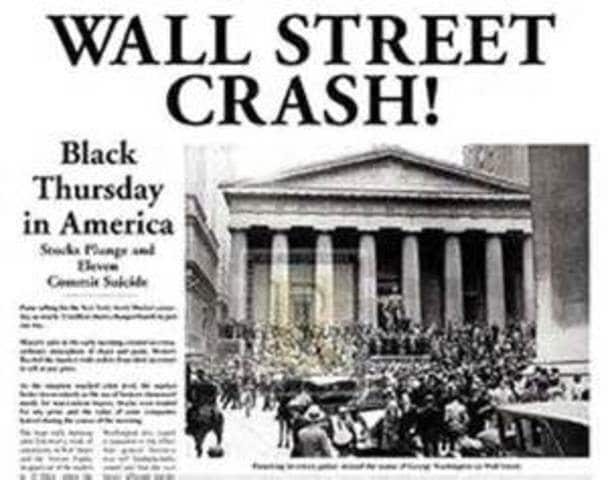
Se også på Socialistisk Bibliotek:
- Emneoversigten: Økonomi/Economy
- Linkboxen: New Deal-politikken i USA
- Emnelisten: Kapitalismen i krise (1) 2008
- Emnelisten: Kapitalismen i krise (2) 2009-
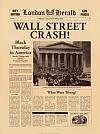
Leksikale:
- Børskrakket 1929 (Denstoredanske.dk)
- Wall-Street-krakket (Wikipedia.dk) + Wall Street Crash of 1929 (Wikipedia.org)
- Glossary of Events: Wall Street Crash (October 1929) (Marxists Internet Archive)
- Wall Street Crash (Spartacus Educational)
Artikler/Articles:
1929: fra opsving til krak til depression. Af Mick Brooks (Revolution, 23. oktober 2009)
“Nedturen var allerede på vej i den ‘virkelige økonomi’, da Wall Street faldt sammen … nedgang i produktion afspejlede sig i aktiernes verden, drømme og illusioner.”
In English: 1929: From boom to bust to depression (In Defence of Marxism, 26 October 2009)
1929 – kan det ske igen? Af Mick Brooks (Revolution, marts 2008)
“Denne artikel blev oprindelig skrevet i forbindelse med 70-året for krakket i 1929.”
In English: 1929: Can it happen again? (In Defence of Marxism, 17 March 2008)
Kapitalens krise 2: Dengang i 30’erne. Af Chris Harman (Internationale Socialisters Forlag, april 1993, 41 s.). Oversat fra Chris Harmans bog: Explaining the Crisis (Bookmarks, London 1984)
Crash course: what the Great Depression reveals about our future: The 1930s revisited. By Larry Elliott (The Guardian, 4 March 2017)
“It was the biggest setback to the global economy since the dawn of the modern industrial age. But did the world’s reaction worsen the effects of the 1929 Crash?” See also comment: Learning from the Great Depression (Michael Roberts Blog, March 9, 2017)
The Great Depression: lessons from the past. By Neil Faulkner (Counterfire, 4 December 2011)
“Our rulers have learnt nothing from the 1930s. They are repeating the mistakes that made the Great Depression so long and so deep. The effect of austerity is to deepen the downturn, increase the deficits, and worsen the debt-load that is dragging down the global economy. That is one of the key lessons of the 1930s.”
The Wall Street crash 1929-33. By Keith Spencer (Fifth International, Vol.3, Issue 2, Spring 2009)
“They called it the roaring twenties but then the boom turned to bust. Keith Spencer explains what caused the crash of 1929 and asks whether there are similarities with today’s global meltdown.”
Notes from the Editors (Monthly Review, Vol.60, No.8, January 2009)
“This year marks the eightieth anniversary of the 1929 Stock Market Crash and the beginning of the Great Depression, the worst economic crisis in the history of capitalism.”
The slump of the 1930s and the crisis today. By Chris Harman (International Socialism, Issue 121, Winter 2009)
“What is the real character of the present meltdown and what are its implications? Chris Harman compares today’s cris with that of 1929-33 to provide some answers.”

Comparing crises: The 1930s, the 1970s, and today. By Ingo Schmidt (Socialist Project/The Bullet, No.141, September 28, 2008)
“It may be revealing to compare the current crisis not to its fairly mild predecessors in this period of neoliberalism, but to the rough rides of the 1930s and 1970s.”
1929: the Wall Street crash (Permanent Revolution, May 4, 2008; online at Internet Archive)
“Bill Jefferies remembers the Wall Street crash of 1929, which plunged the world economy into recession, and punctured capitalism’s dreams of an endless golden future.”
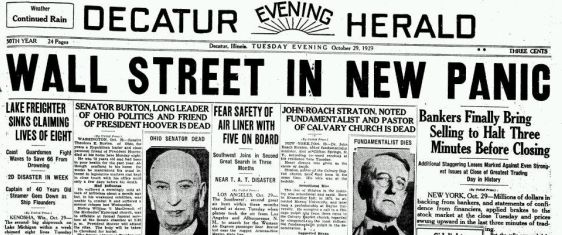
Are we going back to the 1930s?: The economic similarities (Socialist Worker, Issue 2094, 29 March 2008)
“Anindya Bhattacharyya analyses similarities and differences between the crisis then and today.”
Are we going back to the 1930s?: A decade of political polarisation (Socialist Worker, Issue 2094, 29 March 2008)
“Matthew Cookson looks at the decade of economic turmoil and political polarisation.”
The Great Depression: A paradoxical event? (pdf). By Gérard Duménil and Dominique Lévy (Cepremap, September 1995, 64 p.)
“It actually interrupted several very favorable trends: rapid growth of labor productivity, a rising profit rate, etc. We contend that the premature obsolescence of a large segment of the capital stock, in relation to this rapid technical progress, is a crucial factor in the analysis of the Great Depression.”
The testing of American capitalism, 1920-1945. Chapter 9 in Meyer Weinberg: A short history of American capitalism (New History Press, 2003, p.209-244; online at Newhistory.org)
“Prosperity departed abruptly at the end of the decade. Even before the stock market crash of October 1929, economic indexes of construction started slumping. Other indicators did likewise.”
The 1929 Crash (Fight Racism! Fight Imperialism! No.125, June/July 1995)
“Trevor Rayne examines the Great Crash of 1929, prelude to the Depression.”
The Great Depression and the New Deal. Chapter 6 in Paul Mattick: Economics, politics and the age of inflation (M. E. Sharpe, 1978; online at Marxists Internet Archive)
“The Keynesian theory found no verification in the New Deal. The depression was finally ended not by a new prosperity but through World War II, that is, through the colossal destruction of capital on a worldwide scale and a restructuring of the world economy that assured the profitable expansion of capital for another period.”
Book online:
The decline of American capitalism. By Lewis Corey (New York, 1934, 622 p.; online at Marxists Internet Archive)
“The depression which set in after 1929 was the worst economic disaster in American history. It was aggravated by the acute world crisis, a major catastrophe of capitalism. The downward movement of production began in July, 1929 and continued until March, 1933 – three years and nine months.”
Litteratur:
John Kenneth Galbraith: Det store krak 1929 (Gyldendals Uglebøger, 1970, 202 sider)
